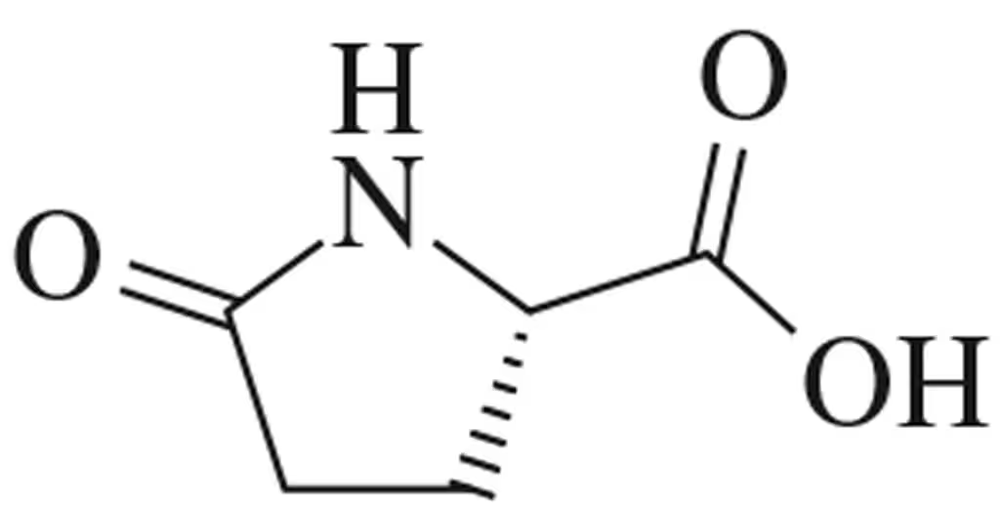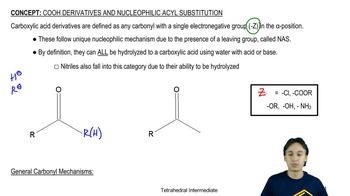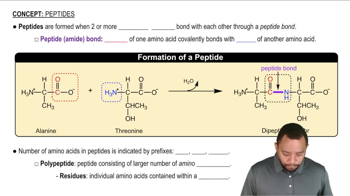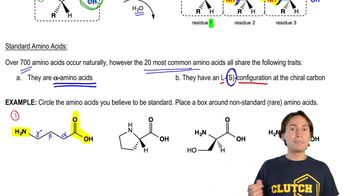Open Question
Acidic/Basic Sidechains - Provide the complete structure of the oligopeptide V-I-D-Y. Based on your knowledge of hydrophobicity, which side of the peptide is more likely bury itself within the protein?

 Verified step by step guidance
Verified step by step guidance Verified video answer for a similar problem:
Verified video answer for a similar problem:

